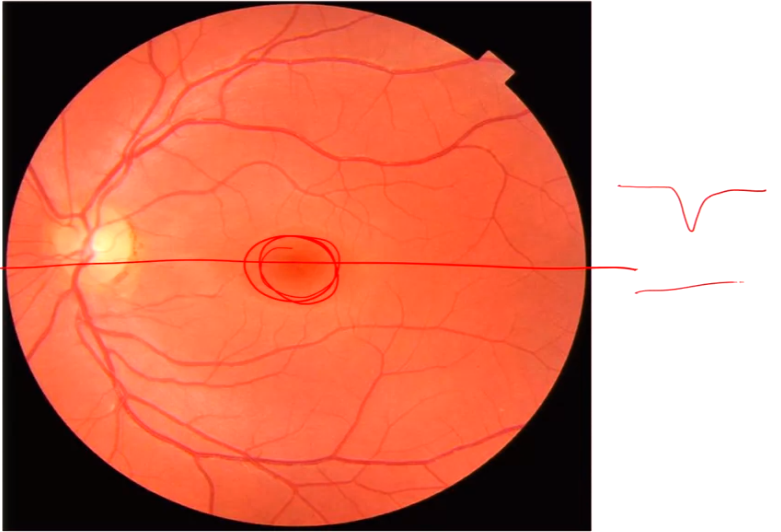Central Vision and the Fovea

- Central vision provides the most detailed view and is crucial for tasks like reading.
- Light from the point of fixation falls on the fovea, a tiny pit-like region in the retina responsible for sharp central vision.
- The fovea contains only cones, lacking rods entirely. This explains why we cannot see color in dim light (scotopic conditions).
The Macula
- The macula, a broader region surrounding the fovea, also has a high concentration of cones, enabling good visual acuity.
- The concentration of cones decreases as we move away from the fovea into the peripheral retina.
Distribution of Rods and Cones

- Rods are scarce in the fovea but reach their peak density about 15 degrees away from the point of fixation.
- This distribution explains why we look slightly off-center to see faint stars at night. By doing so, we use the area rich in rods.
Foveation and Peripheral Vision
- Foveation refers to directing our gaze at an object of interest to bring its image onto the fovea for optimal detail perception.
- Peripheral vision, mediated by the outer retina, has lower acuity but provides a wider field of view crucial for tasks like detecting motion.
The Blind Spot
- The optic disc, where retinal ganglion cell axons converge to form the optic nerve, lacks photoreceptors, creating a blind spot in our vision field.
- This blind spot is usually unnoticed because the brain fills in the missing information from the surrounding area and the other eye (binocular vision).
Macular Degeneration
- Macular degeneration is an age-related condition affecting central vision due to damage in the macula.
- The lecture presents an example of how macular degeneration disrupts central vision while peripheral vision remains unaffected.
Next Up: Color Vision
- The next lecture segment will explore color vision and how different cone types contribute to it.